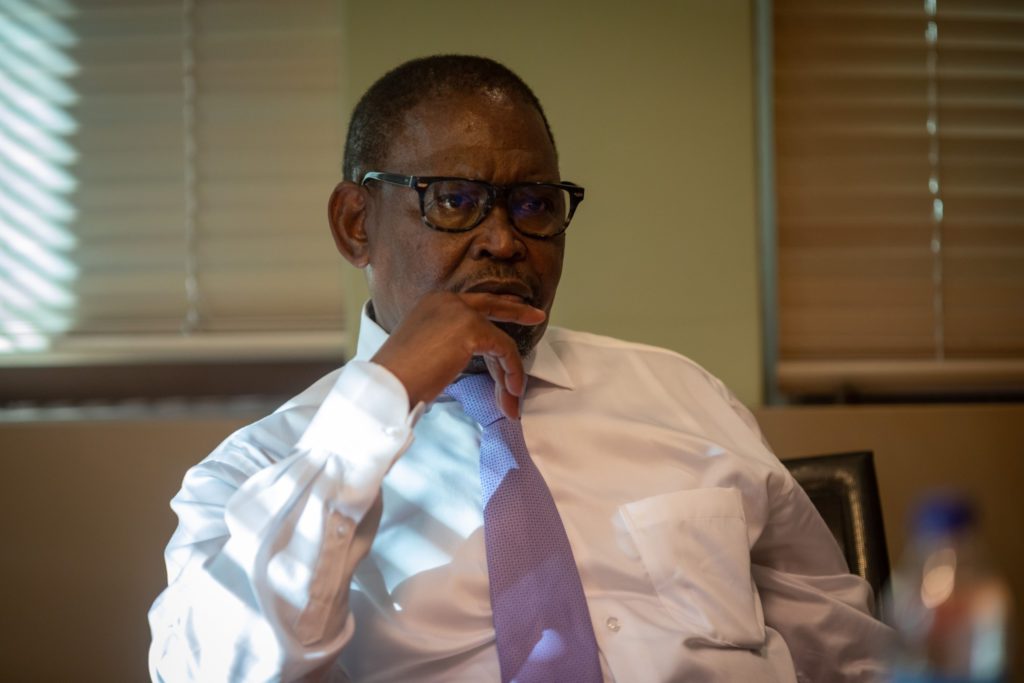(Bloomberg) — South African Finance Minister Enoch Godongwana’s efforts to stabilize public finances may be strained by an expansion of the social-welfare net and additional support for the debt-laden state power company when he presents his first annual budget on Wednesday.
While higher commodity prices have boosted tax collection and given the former labor unionist some leeway, permanent spending commitments without measures to accelerate lackluster economic growth would leave state finances in a precarious position.
These charts show what to look out for in the fiscal framework that Godongwana will unveil from about 2 p.m. on Wednesday:
Budget Gap
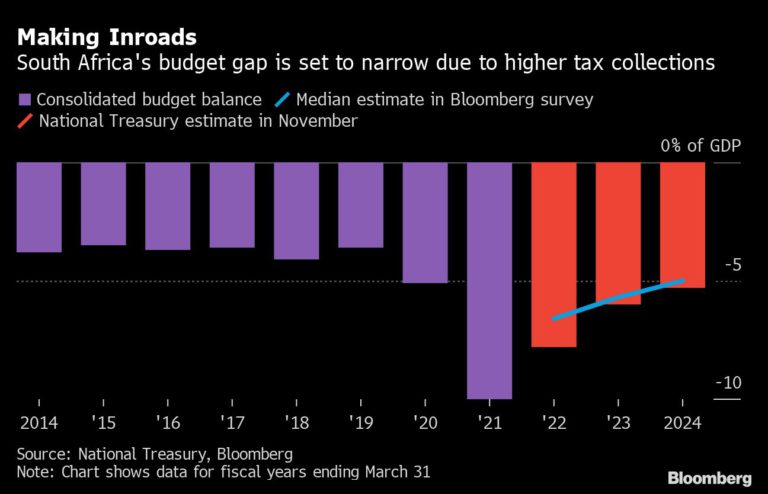
With revenue on course to exceed estimates, the consolidated budget deficit should narrow faster than previously expected. The median of 18 economists’ estimates in Bloomberg survey is for a shortfall of 5.7% of gross domestic product in the fiscal year through March 2023, compared with the National Treasury’s November estimate for a gap of 6%.
Improved tax collection should also see a tighter and faster path to a primary budget surplus, the Treasury’s most critical fiscal anchor. Two-thirds of survey participants expect the government to meet its target of achieving this by fiscal 2025.
Declining Debt
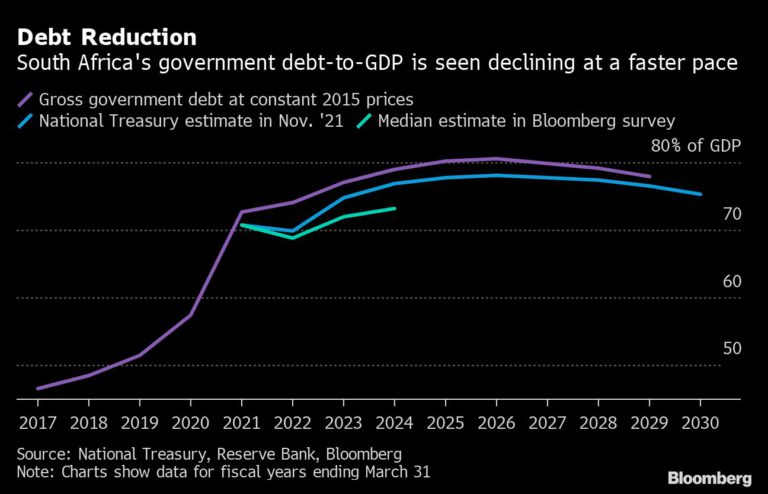
South Africa’s debt levels are also expected to undershoot the Treasury’s November estimates, according to economists in the Bloomberg survey. The improvement could be derailed if the state decides to take over part or all of Eskom’s 392 billion rand of debt, an option the International Monetary Fund says the government is considering.
The government could cut its planned bond issuance unless it “may wish to keep its powder dry and continue to build buffers in anticipation of additional looming, non-interest spending demands,” Jeffrey Schultz, a senior economist at BNP Paribas, said in a note.
Welfare Payments
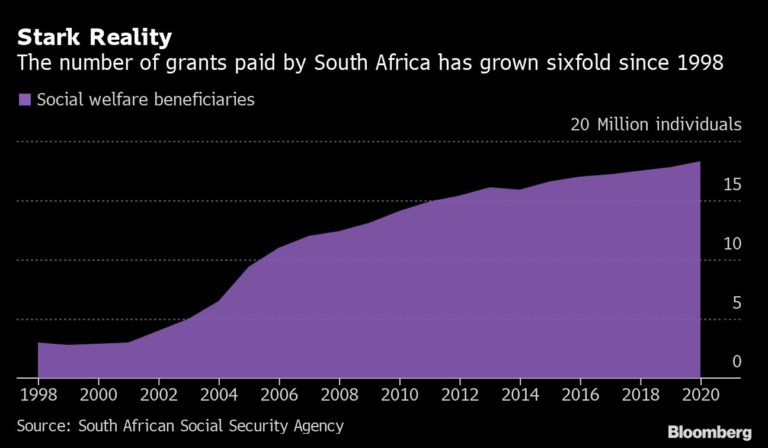
President Cyril Ramaphosa this month extended a monthly grant for the jobless, first introduced in response to the pandemic, by a year through March 2023, a move that will probably be funded by the revenue windfall. Of the economists polled by Bloomberg, 81% expect the stipend to be made permanent and two-thirds foresee the introduction of a basic income grant before national elections in 2024.
A permanent expansion of the welfare net means the government will have to consider more borrowing and raising taxes, according to the survey participants.
State Pay
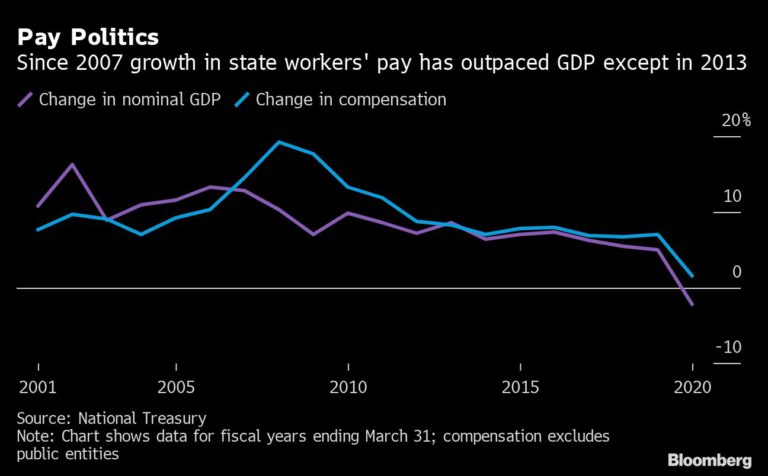
Negotiations for state-worker salaries, which have outpaced economic growth since 2014 and average almost a third of budget expenditure, continue to cloud the fiscal outlook.
A failure to clinch a new three-year pay deal with labor groups that represent about 1.3 million civil servants could also add to spending pressures. Talks that could run until March next year mean the National Treasury will have to continue paying cash gratuities that could cost more than its 20.5 billion-rand annual estimate, according to survey participants.
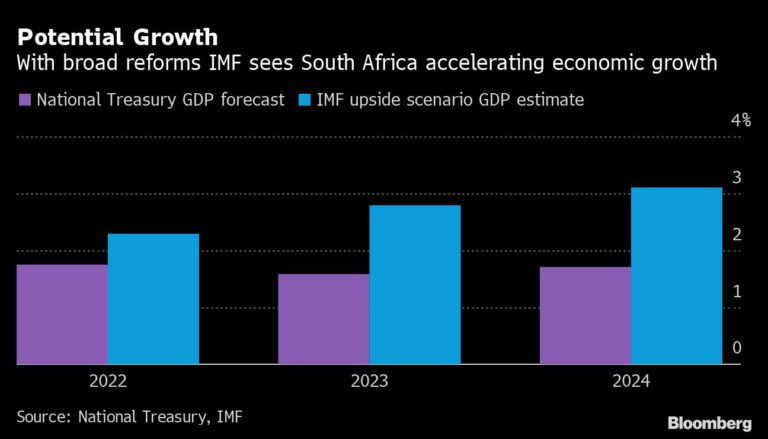
The Treasury is expected to retain the conservative GDP growth estimates it gave in November for the next three years but may revise 2022’s slightly upward, PwC said in its predictions last week. The IMF has warned that unless broad structural reforms are adopted in coordination with fiscal consolidation, the growth rate is unlikely to exceed the 2% needed to begin to meaningfully reduce unemployment and poverty

